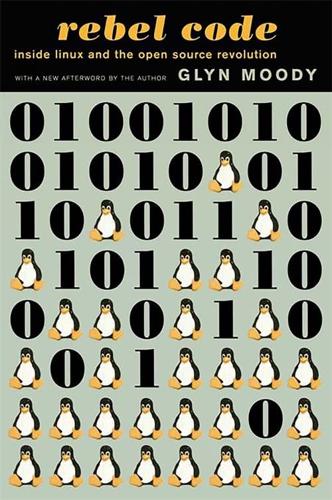
Rebel Code: Linux and the Open Source Revolution
by
Glyn Moody
Published 14 Jul 2002
The four leading distributions were not the only established players in the GNU/Linux world who benefited from the powerful backing of mainstream computer giants and the financial markets during 1998 and 1999. Another was the GNU/Linux hardware company VA Research, which changed its name to VA Linux in April 1999. Like Red Hat, VA Linux was plucked from its relative obscurity by an investment, announced on 12 November 1998, this time from Sequoia Capital, which had helped propel companies such as Yahoo to the next level. Intel then added its blessing to VA Linux with an investment on 19 February 1999. VA Linux’s IPO took place on 9 December 1999. The shares opened at $30 and closed at $239.25, an increase of nearly 700 percent—a new record for the largest first-day gain of an initial public offering.
…
That’s why it wasn’t designed for small little bug fixes; it was designed for the bigger problems, the ones that are keeping bigger projects from getting to the next level.” VA Linux is another company that hopes to provide employment for hackers, promote free software, and make money in the process. Although initially formed to put together hardware optimized for running GNU/Linux, its scope has broadened considerably. “We have our systems business, which is geared towards providing the best hardware and systems to run Linux, particularly for those people building Internet sites,” says Larry Augustin, CEO of VA Linux. As well as selling the basic hardware and software, VA Linux is also in the business of providing custom solutions, and in a novel way.
…
Few have fallen further than the brightest star in the open source IPO firmament, VA Linux. Not only was the company shunned by investors because of its free software affiliation, but its sales collapsed as many of its best customers—the Internet start-ups—were themselves wiped out in the dot-com crash. As a result, on 20 February 2001, VA Linux announced a bigger-thanexpected loss and cut 25 percent of its workforce. But even such major reductions were insufficient to address the scale of the problem, which became clear when VA Linux announced its third-quarter results in May. For 2000, sales for the third quarter had totaled $34.6 million; in 2001, they were just $20.3 million for the same three-month period.
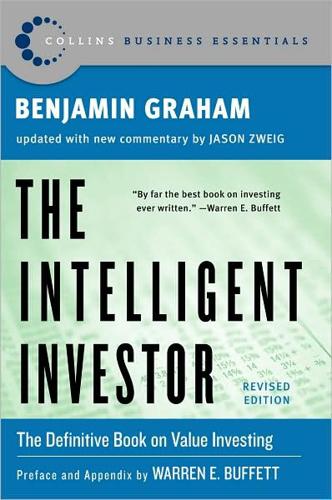
The Intelligent Investor (Collins Business Essentials)
by
Benjamin Graham
and
Jason Zweig
Published 1 Jan 1949
At the peak price on day one, investors were valuing VA Linux’s shares at a total of $12.7 billion. What was the company’s business worth? Less than five years old, VA Linux had sold a cumulative total of $44 million worth of its software and services—but had lost $25 million in the process. In its most recent fiscal quarter, VA Linux had generated $15 million in sales but had lost $10 million on them. This business, then, was losing almost 70 cents on every dollar it took in. VA Linux’s accumulated deficit (the amount by which its total expenses had exceeded its income) was $30 million. If VA Linux were a private company owned by the guy who lives next door, and he leaned over the picket fence and asked you how much you would pay to take his struggling little business off his hands, would you answer, “Oh, $12.7 billion sounds about right to me”?
…
But when we’re in public instead of in private, when valuation suddenly becomes a popularity contest, the price of a stock seems more important than the value of the business it represents. As long as someone else will pay even more than you did for a stock, why does it matter what the business is worth? This chart shows why it matters. FIGURE 6-2 The Legend of VA Linux After going up like a bottle rocket on that first day of trading, VA Linux came down like a buttered brick. By December 9, 2002, three years to the day after the stock was at $239.50, VA Linux closed at $1.19 per share. Weighing the evidence objectively, the intelligent investor should conclude that IPO does not stand only for “initial public offering.” More accurately, it is also shorthand for: It’s Probably Overpriced, Imaginary Profits Only, Insiders’ Private Opportunity, or Idiotic, Preposterous, and Outrageous.
…
From 1980 through 2001, if you had bought the average IPO at its first public closing price and held on for three years, you would have underperformed the market by more than 23 percentage points annually.9 Perhaps no stock personifies the pipe dream of getting rich from IPOs better than VA Linux. “LNUX THE NEXT MSFT,” exulted an early owner; “BUY NOW, AND RETIRE IN FIVE YEARS FROM NOW.”10 On December 9, 1999, the stock was placed at an initial public offering price of $30. But demand for the shares was so ferocious that when NASDAQ opened that morning, none of the initial owners of VA Linux would let go of any shares until the price hit $299. The stock peaked at $320 and closed at $239.25, a gain of 697.5% in a single day. But that gain was earned by only a handful of institutional traders; individual investors were almost entirely frozen out.

Free as in Freedom
by
Sam Williams
Published 16 Nov 2015
By August of 1999, Red Hat, a company that now eagerly billed itself as "open source," was selling shares on Nasdaq. In December, VA Linux-formerly VA Research-was floating its own IPO to historical effect. Opening at $30 per share, the company's stock price exploded past the $300 mark in initial trading only to settle back down to the $239 level. Shareholders lucky enough to get in at the bottom and stay until the end experienced a 698% increase in paper wealth, a Nasdaq record. Among those lucky shareholders was Eric Raymond, who, as a company board member since the Mozilla launch, had received 150,000 shares of VA Linux stock. Stunned by the realization that his essay contrasting the Stallman-Torvalds managerial styles had netted him $36 million in potential wealth, Raymond penned a follow-up essay.
…
Different as they were in every other respect, that the person I most now compare him to in that sense, all of a piece, compact, made of the substance that makes stars, all the way through, is Stallman. In an effort to drive that image home, Moglen reflects on a shared moment in the spring of 2000. The success of the VA Linux IPO was still resonating in the business media, and a half dozen free software-related issues were swimming through the news. Surrounded by a swirling hurricane of issues and stories each begging for comment, Moglen recalls sitting down for lunch with Stallman and feeling like a castaway dropped into the eye of the storm.
…
At the time, I was writing stories for the ill-fated BeOpen web site (http://www.beopen.com/). One of my first assignments was a phone interview with Richard M. Stallman. The interview went well, so well that Slashdot (http://www.slashdot.org/), the popular "news for nerds" site owned by VA Software, Inc. (formerly VA Linux Systems and before that, VA Research), gave it a link in its daily list of feature stories. Within hours, the web servers at BeOpen were heating up as readers clicked over to the site. 158 For all intents and purposes, the story should have ended there. Three months after the interview, while attending the O'Reilly Open Source Conference in Monterey, California, I received the following email message from Tracy Pattison, foreign-rights manager at a large New York publishing house: To: sam@BeOpen.com Subject: RMS InterviewDate: Mon, 10 Jul 2000 15:56:37 -0400 Dear Mr.
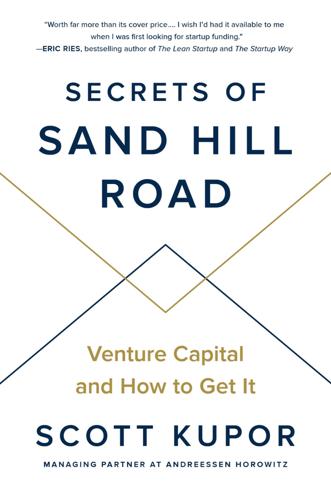
Secrets of Sand Hill Road: Venture Capital and How to Get It
by
Scott Kupor
Published 3 Jun 2019
I live in Silicon Valley, not Tennessee, so the best I can do is wear cowboy boots to work and play the guitar in my spare time. Both of which I do, as often as possible. Let me give you a little bit of context about what the tech and investment world was like when I was getting started in in the 1990s. Some of the big tech names back then were E.piphany, NetIQ, VA Linux, Commerce One, Razorfish, and Ask.com. It’s possible you haven’t heard of any of these companies, but they—like me—were products of the 1999–2000 tech bubble that produced roughly nine hundred initial public offerings of venture-backed tech companies. It was a great time to be starting out in the tech industry, as there seemed to be no end to the promise of technology and to the amount of wealth creation that was available to everyone involved.
…
On the flip side, if the underwriters set the initial price too low and the stock trades way up in the aftermarket, the institutional investors may be happy because of the appreciation, but the company will feel as though it left a lot of money on the table or unnecessarily suffered dilution. Interestingly, when I was a banker at Credit Suisse First Boston in the dot-com bubble, we held the record for the largest one-day IPO increase in a stock price. The company was VA Linux, and the stock, which was priced at $30 per share in the IPO, traded immediately (on the opening trade) to $300 per share and then closed on the first day of trading at $242.38, an 8x increase in one day. Funny enough, at that time, we actually celebrated and marketed this as our brilliance in leading the IPO; in retrospect, that was a pretty sure sign that we completely misjudged the real market price for the stock!
…
See dot.com boom/bust term sheets, 140–169, 170–188 on aggregate proceeds, 142, 278 antidilution provisions in, 165–167, 280–281 on board of directors, 171–173, 281 on capitalization, 154, 278 on confidentiality, 285 on conversion/auto-conversion to common shares, 160–165, 280 on co-sale agreements, 181 on D&O insurance, 183, 284 on dividends, 154–155 drag-along provisions in, 182–183, 252, 284 on employee and consultant agreements, 187 and go-shop provisions, 239 on information rights, 282 on legal counsel and fees, 286 on liquidation preference, 155–159, 279 and no-shop provisions, 187–188, 239, 285 on preferred shares, 141–142 on price per share, 147–149, 278 on pro rata investments, 178–180, 283 on protective provisions, 173–177, 281–282 and recapitalizations, 281, 282 on redemption rights, 159 on registration rights, 178, 282 on right-of-first-refusal, 180–181 sample, 141, 277–286 on stock purchase agreement, 284 on stock restriction, 180–182, 283 on vesting, 183–187, 284 on voting rights, 167–169, 281 Tesla, 110 timing in startup world, importance of, 14 Tiny Speck, 137 Trados case, 220–231 and common shareholders, 221–222, 223 and conflict of board, 222–226 decision on, 227–228 distribution of proceeds from acquisition, 221 and entire fairness rule, 222, 226–229 guidelines stemming from, 225–226 and management incentive plan, 221, 226–227 takeaways from, 228–231 transfer restrictions, 98–99 Uber, 102, 172–173 United States and venture capital, 3, 271, 275 university endowments, 54–55, 56–57, 71 unrelated business income (UBIT), 93–94 use of proceeds, 278 vacation policies, 244–245 VA Linux, 264–265 valuation, 118–123 and antidilution provisions in term sheet, 165–167 and convertible notes, 144 pre- and post-money, 147–149 of very-early-stage startups, 153–154 valuation marks, understanding, 76–83 venture-backed companies economic impact of, 3–4, 41 exiting options of (see acquisitions; initial public offerings) five largest US market capitalization companies, 25, 41 and information asymmetry, 5, 140, 275 VC’s relationship with, 2–3, 4–5 venture capital (VC) and ability to raise new funds, 67–68 as asset class, 29–30 batting average of, 37–40 cardinal sins of, 44, 50–51, 179–180 competition for, 271–272 distribution of returns for, 30–32, 31, 35, 38, 40 and dot.com boom/bust, 64–65 early years in Silicon Valley, 19–20 as endorsement of a company, 43–44 equity financing as basis of, 26–27, 28 and evolution of VC industry, 270–273 extensions of last round of, 233 and institutional investors, 40–41 life cycle of, 7–8, 114–115, 268 and life cycle of fund, 152 measuring success of, 36–40 median ten-year returns in, 30 and multiple funds, 67 potential replacements for, 273–274 relationship of LPs to, 69–71 reserves set aside by, 66–67 restricted nature of, 35–36 risks inherent in, 39 rounds of, 34–35, 66–67, 115–117, 138–139, 151–152 signaling in, 32–33, 35, 37 size of industry, 40–41 and state of fund, 83–84 three professional roles in, 29 and Yale University endowment, 62–63, 64–65 as zero-sum game, 33–35 venture capitalists average duration of relationship with, 5, 115 creating incentives for, 114–115 as dual fiduciaries, 201–202 exit of, following IPO, 266–267 and failure to invest in winners, 33 funding from (see difficult financings; raising money from venture capitalists; term sheets) goals of, 114–115, 126, 139 and information asymmetry, 5, 140, 275 and opportunity costs, 43–44, 83, 212–213, 223 over-involvement with company, 203 and pitches (see pitching to venture capitalists) role of, 2–3, 29, 274–275 vesting accelerated, 99–101, 186–187, 250–251 and acquisitions, 250–251 and founders, 95–97, 99–101, 183, 186, 205–206 and general partners (GPs), 89 and term sheets, 183–187, 284 VMware, 132 voting on authorization of new classes of stock, 176 on corporate actions, 176 protective provisions on, 173–177 voting rights, 167–169, 281 WARN statutes, 243–244 waterfall valuation method, 77, 78–79 Waymo, 187 whaling industry, 53 winding down the company, 243–246 working capital, 150 Yale University endowment, 54, 59–65 Y Combinator (YC), 20–21 zero-sum game, venture capital as, 33–35 ABCDEFGHIJKLMNOPQRSTUVWXYZ ABOUT THE AUTHOR Scott Kupor is the managing partner of Andreessen Horowitz.
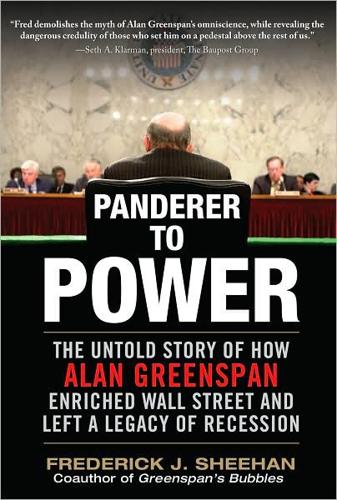
Panderer to Power
by
Frederick Sheehan
Published 21 Oct 2009
Day trading was sweeping the nation—teachers and lawyers quit their jobs and traded stocks from their bedrooms. Their future was lunchtime. Greenspan’s dyspeptic (for him) outburst was probably in reaction to staff economist Michael Prell’s earlier discussion of an IPO prospectus. The indefatigable Prell had discussed VA Linux, which entered the carnival on December 9, 1999. VA Linux jumped 700 percent on its first day of trading. It was valued at $9 billion. Prell compared the current atmosphere to that of England’s South Sea Bubble fiasco in 1720 which so devastated Isaac Newton, he would not discuss it for the rest of his life. He quoted from the South Sea share offering: “ ‘A company for carrying on an undertaking of great advantage, but nobody to know what it is.’”28 25 For FOMC comments, see William A.
…
Treasuries) Trichet, Jean-Claude, 331–332 Triffin, Robert, 42 Triplett, Jack, 148, 149 The Trouble with Prosperity (James Grant), 125 Truman, Harry, 20 Tuccille, Jerome, 27, 83, 96 Turner Broadcasting, 80 “2 and 28” mortgages, 325 Tyco International, 248 U uBid, 174 Uchitelle, Louis, 117–119 Unemployment: in 1970s, 309 in 1980s, 77 in early 2000s, 308 and recession of early 1990s, 127 United Services Advisors, 130 University of Chicago, 26, 37, 42, 334 Urban, David, 320 U.S. News and World Report, 64 U.S. Treasuries: and 1987 stock market crash, 113 and 1990s recession, 122 inflation-indexed bonds, 147 speculation with, 125–126 yields on, 20, 72, 126, 128, 287 V VA Linux, 211 Vanderbilt, Gloria, 74 Vanguard Group, 130 Verbal inflation, 63–64 Vinik, Jeff, 140 Volcker, Paul, 66, 68, 76, 79, 82–83, 95, 96, 112–113, 115, 121, 191, 201, 221, 346–348 Volkswagen, 49, 308–309 Vreeland, Diana, 75 W Wachovia Mortgage, 328 Wall Street: in the 1960s, 33 “buy” recommendations of, 178 and economic slowdown of 2000, 232 prior to 1950s, 19–20 real estate investments, 273–274 Wall Street Journal, 39, 82, 96, 133, 141,157, 161, 159, 195, 198, 207, 222, 233, 238, 243, 244, 274, 280, 293, 299, 319, 338, 345, 347–348, Walters, Barbara, 5, 31, 57, 75 Warehouse lines of credit (banks to mortgage lenders), 275 Warsh, Kevin, 334 Washington Times, 300 Washington Post, 280 Washington University, 42 Wasserstein Perella, 116 Wealth: household, 258, 260, 265 transfer of, 290 and unsound business structures, 352 Weidenbaum, Murray, 42, 60 Weil, Simone, 360–365 Weill, Sandy, 356 Westenhiser, Jamie, 295 Westmoreland, William, 37 White, Theodore H., 74–75 Whole Foods Market, 355 Wigmore, Barrie, 81, 88–89 Wilkes-Barre, Pennsylvania, 320 Williams, John, 149, 151–152 Wolfensohn, James, 217 Wolff, Michael, 173–174 Wood, Christopher, 201 Woodward, Bob, 171, 236 WorldCom, 248 Wriston, Walter, 78 X Xerox, 101 Y Y2K problem, 210–211, 215–216 Yellen, Janet, 138, 171, 240, 253 Z Zeckendorf, William, 23, 353, 355 Zeckendorf, William, III, 356 Zell, Sam, 311, 320, 325 Zipkin, Jerry, 75 Zola, Émile, 265
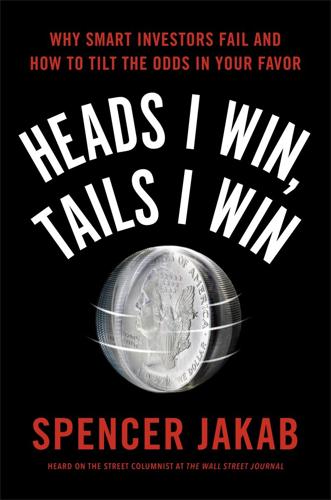
Heads I Win, Tails I Win
by
Spencer Jakab
Published 21 Jun 2016
For those who were allocated shares in the offering and sold even at the lower closing price, the 108 percent gain was the equivalent of making about a decade’s worth of typical stock market returns in less than seven hours. That was just a preview of coming attractions. Other IPOs during the heyday of the technology boom, which ran from 1998 through early 2000, did far better. Companies such as VA Linux, Foundry Networks, the Globe.com, and webMethods all rose by at least 500 percent on their debuts. Flotations of young and exciting technology companies went ice cold for several years but resurfaced recently in a less manic echo of the dot-com boom. After some successful ones earlier in 2011, few doubted that Zynga would follow the script, perhaps posting a 40 or 50 percent first-day gain.
…
., 139 unemployment, 50, 52, 57–59, 232 United States Congress, 33 credit rating, 46–47 Labor Department, 57–59 Oil Fund, 205 presidents, 42, 70, 146 Treasury notes, 69, 77, 82, 166, 207, 248 University of Chicago’s Center for Research in Security Prices, 115 University of Iowa, 146 University of Michigan, 43 USA Mutuals Barrier Fund, 189 VA Linux, 179 valuation, 27, 71–73, 77, 86, 90–96, 107, 139, 181, 218, 222 value investing, 113, 129, 157–58, 192, 219–22, 227–28, 232 “Value vs. Glamour: A Global Phenomenon” (Brandes Institute), 194–95 Vanguard Group, 62, 78–79, 151–53, 156, 158–59, 189 Vanguard Target Retirement 2035 Fund, 78–79 Vega, Joseph de la, 234 Vice Fund, 188–89 Visa, 183 Volatility Index (VIX), 203–4, 239–41 Wall Street Journal, 2, 21, 24–25, 45, 65, 79, 107, 139, 143–44, 146, 198, 203, 208, 246 Ware, Alan, 163 wars, 35, 49, 54, 58, 88, 145, 233–34, 239, 241 Washington Post, 29 Washington State University, 142 Wealthfront, 83 Wealth of Common Sense, A, blog (Carlson), 30–31 Weber, Martin, 12–13, 18 webMethods, 179 Wilshire 5000, 193 Wilshire Associates, 186–87 Winkler, Max, 197 Womack, Kent, 134–35 Wooten, Jadrian, 142–43 WorldCom, 101 Yale University, 81, 92 YBM Magnex, 196 Zacks Investment Research, 134 Zweig, Jason, 255 Zynga, 178–82 Looking for more?
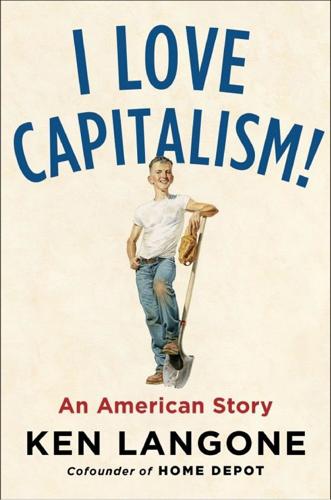
I Love Capitalism!: An American Story
by
Ken Langone
Published 14 May 2018
We always let our customers decide how much commission they wanted to pay us, within the bounds of legality: there’s a rule that says a broker may not charge more than a 5 percent mark-up on any transaction. When some customers flipped a hot stock and made a big profit, they rewarded us by paying us a generous commission, but never more than the rule allowed. NASD singled out one instance where the price of a hot IPO, VA Linux, went from $15 a share to $300 on the day of issue, and a customer of ours who’d bought it low and flipped it high paid us a commission of $8 a share. That was a lot more than the industry norm, but a lot lower than 5 percent, which would’ve been $15 a share. And it was the customer’s decision, not ours.
…
See also specific companies 3M, 209, 255, 257 Tie City, 24 Tisch, Billie, 179 Tisch, Larry, 179 tobacco company, 25–26 Toronto, 111, 158 Trans Union, 139–40 Tribeca Grill (New York City), 201–2 truck-leasing business, 241, 252–53 Turner, John, 39, 64 TV shows/stations, 57, 59, 170, 189, 210 21 Club, 76, 97, 247 underwriting, 82–83, 91–92, 96–97, 103, 111, 160–61, 192, 198 Unifi, 123, 129, 184, 240, 263–64 unions, 5–6, 20, 147–48 Upjohn, 127 U.S. Army, 10, 39, 42–44, 46–47, 49–52 U.S. Railway Leasing, 82 U.S. Steel, 56–57, 184 U.S. Treasury Department, 169, 171, 173, 185 U.S. Trust, 119 USA Today, 169 VA Linux, 193 Valeant, 252 venture capital, 122, 151–54 Victor, Larry, 81–82 Vietnam, 50, 78, 112 Vilcek, Jan, 250 Volcker, Paul, 161 W. R. Grace and Company, 150 Wachtell, Lipton, Rosen & Katz, 175 and ChoicePoint deal, 244 represents Home Depot, 223, 225 represents Langone, 193–95, 198, 200 represents NYSE, 190–91 See also Lipton, Marty Wahrburg, Dorothea, 124–25 Waldorf Astoria (New York City), 89–90, 109, 148, 150, 169, 199 Wall Street, 41, 69, 73, 111, 166 and 2008 crisis, 244, 249–50 analysts of, 56–57, 216 democratization of, 79 seeking career in, 26–27, 29, 32, 52–54, 266 and Spitzer investigations, 187–88 toxic climate of, 189–90, 193 Waspy world of, 76–77 Wall Street Club, 99–100 Walling, Fitz, 17–18 Walmart, 257–59 Walton, Sam, 257–59 Warner-Lambert, 116, 124 Washington, D.C., 91, 103–4, 194–95, 254 Weill, Sandy, 187–88 Welch, Jack, 190, 205–10, 214, 219–22 West, Dick, 174 Western and Southern Life Insurance, 57, 63 White Weld, 32, 97 Whitenight, Hudson “Huddy,” 33–36, 38–39, 266 Wigwam stores (Arizona), 66–67 Williams, Larry, 105 Williams, Webb, 69–73 Winthrop, Stimson, Putnam & Roberts, 104–5, 107 World War II, 1, 4, 8, 52, 90, 92, 257 WorldCom scandal, 187, 217 Wuliger, Ernie, 123 Wygal, Luke, 82 Xerox, 67, 255–56 Yntema, Theodore, 71 Yum!
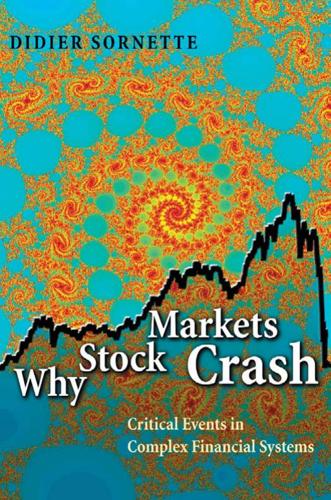
Why Stock Markets Crash: Critical Events in Complex Financial Systems
by
Didier Sornette
Published 18 Nov 2002
The Nasdaq Composite consists mainly of stock related to the so-called “New Economy,” that is, the Internet, software, computer hardware, telecommunications, and similar sectors. A main characteristic of these companies is that their price–earning ratios (P/Es), and even more so their price–dividend ratios, often come in three digits. Some, such as VA LINUX, actually have a negative earning/share (of −168). Yet they finan cial crashe s : w h a t, w h y, a n d w h e n? 21 are traded at around $40 per share, which is close to the price of a share of Ford in early March 2000. In constrast, so-called “Old Economy” companies, such as Ford, General Motors, and DaimlerChrysler, have P/E ≈ 10.
…
In 1929, it was utilities; in 1987, the bubble was supported by a general deregulation of the market, with many new private investors entering the market with very high expectations about the profit they would make; in 1998, it was an enormous expectation for the investment opportunities in Russia that collapsed; until early 2000, it was the extremely high expectations for the Internet, telecommunications, and similar sectors that fueled the bubble. The IPOs (initial public offerings) of many Internet and software companies have been followed by a mad frenzy, where the share price has soared during the first few hours of trading. An excellent example is VA LINUX SYSTEMS whose $30 IPO price increased a record 697% to close at $23925 on its finan cial crashe s : w h a t, w h y, a n d w h e n? 23 Fig. 1.8. Top panel: Time series of daily closes and volume of the Lucent Technology stock over a one-year period around the large drop of January 6, 2000. The time of the crash can be seen clearly as coinciding with the peak in volume (bottom panel).
…
The Nasdaq composite consists mainly of stock related to the New Economy, that is, the Internet, software, computer hardware, telecommunication, and so on. A main characteristic of these companies is that their P/Es, and even more so their price-over-dividend ratios, often came in three digits prior to the crash. Some companies, such as VA LINUX, actually had a negative earnings/share of −168. Yet they were traded around $40 per share, which is close to the price of Ford in early March 2000. Opposed to this, so-called Old Economy companies, such as Ford, General Motors, and DaimlerChrysler, had 270 chapter 7 P/Es ≈ 10. The difference between Old Economy and New Economy stocks is thus the expectation of future earnings [395]: investors, who expect an enormous increase in, for example, the sale of Internet and computer-related products rather than in car sales, are hence more willing to invest in Cisco than in Ford notwithstanding the fact that the earning-per-share of the former is much smaller than for the latter.

Remix: Making Art and Commerce Thrive in the Hybrid Economy
by
Lawrence Lessig
Published 2 Jan 2009
It respected the terms of the license; it supported development that others could build upon; indeed, as Young estimates, at one point more than 50 percent of the core kernel development team worked for Red Hat,5 and both Red Hat and 80706 i-xxiv 001-328 r4nk.indd 183 8/12/08 1:55:37 AM 184 REMI X VA Linux Systems gave stock options to Linus Torvalds.6 Many from the GNU/Linux community helped Red Hat understand what appropriate behavior was, and the company took great steps to make sure its behavior was appropriate. A key element to a successful hybrid is understanding the community and its norms.
…
“GNU Free Documentation License,” Free Software Foundation, available at link #92 (last visited August 20, 2007). 4. All quotes from Brian Behlendorf taken from an interview conducted May 11, 2007, by telephone. 5. Red Hat employed 50 percent of Linux’s core team. Telephone interview with Robert Young, April 26, 2007. 6. Red Hat and VA Linux gave stock options to Torvalds. Wikipedia contributors, “Linus Torvalds,” Wikipedia: The Free Encyclopedia, available at link #93 (Last visited July 31, 2007); Gary Rivlin, “Leader of the Free World,” Wired, November 2003, available at link #94. 7. All quotes from Mark Shuttleworth taken from an interview conducted March 19, 2007, by telephone. 8.
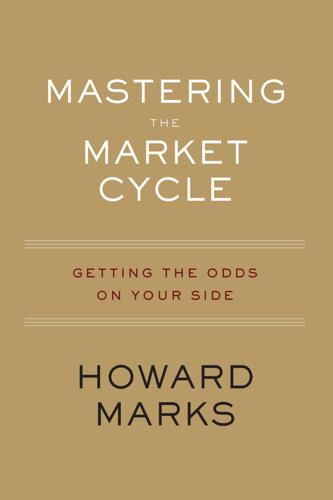
Mastering the Market Cycle: Getting the Odds on Your Side
by
Howard Marks
Published 30 Sep 2018
Certainly an objective temperature-taker could have known the pieces were in place for a substantial bubble that was likely to fall to earth. Here are some of phenomena as I described them in “bubble.com” (January 2000): Webvan Group, which started in business in 1999, had sales of $3.8 million and a $350,000 profit in the September quarter. The stock market currently values it at $7.3 billion. On December 9, VA Linux went public at 30 and soared 698% that day to $239, for a market value of $9.5 billion, half that of Apple. To that date, the company’s 1999 sales were $17.7 million and it had lost $14.5 million (versus Apple’s profit of $600 million in the most recent twelve months). Because the price/earnings ratios of Internet companies are so outlandish—usually negative—one may be forced to look to the price/sales ratio in order to speak about valuation.
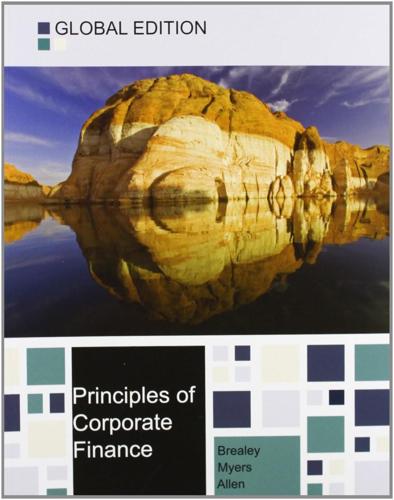
Principles of Corporate Finance
by
Richard A. Brealey
,
Stewart C. Myers
and
Franklin Allen
Published 15 Feb 2014
Wise underwriters, therefore, realize that their reputation is on the line and will not handle an issue unless they believe the facts have been presented fairly to investors. So, when a new issue goes wrong, the underwriters may be blamed for overhyping the issue and failing in their “due diligence.” For example, in December 1999 the software company Va Linux went public at $30 a share. The next day trading opened at $299 a share, but then the price began to sag. Within two years it had fallen below $2. Disgruntled Va Linux investors sued the underwriters, complaining that the prospectus was “materially false.” These underwriters had plenty of company, for following the collapse of the dot.com stocks in 2000, investors in many other high-tech IPOs sued the underwriters.
…
Among other things, he provides evidence that the 7% spread is not abnormally profitable and argues that it is part of a competitive and efficient market. See R. Hansen, “Do Investment Banks Compete in IPOs?: The Advent of the 7% Plus Contract,” Journal of Financial Economics 59 (2001) pp. 313–346. 22It does not, however, hold the record. That honor goes to VA Linux. 23Our figure is an equally weighted average of first-day returns and is calculated from data on bear.cba.ufl.edu/ritter. As we saw in Chapter 13, there is some evidence that these early gains are not maintained and in the five years following an IPO the shares underperform the market. 24The Chinese returns are for A shares, which are traded only domestically.
…
Securities and Exchange Commission (SEC), 11, 303–304, 377–378, 852 accounting and reporting standards, 721 proposed Rule 14a-11, 354n Rule 10b-18, 403n Rule 144A, 391, 616 well-known seasoned issuer (WKSI), 385n U.S. Shoe Corp., 615 U.S. Steel, 65 U.S. Supreme Court, 85n, 827 U.S. Surface Transportation Board (STB), 87 U.S. Trust, 812 United Technologies, 806 Universal Orlando, 848 Unlevering beta, 492–493, 494n Unlimited liability, 592 Unocal, 821 US Airways Group, Inc., 5n V Vale, 3, 827 Va Linux, 380, 381n Valuation of abandonment option, 569 annuity. See Annuities bond. See Bond valuation business. See Business valuation process by certainty equivalents, 232–233 by comparables, 78–80, 226–227 debt. See Debt valuation equity. See Equity valuation financial lease, 646–652 option, 523–528, 535–555.
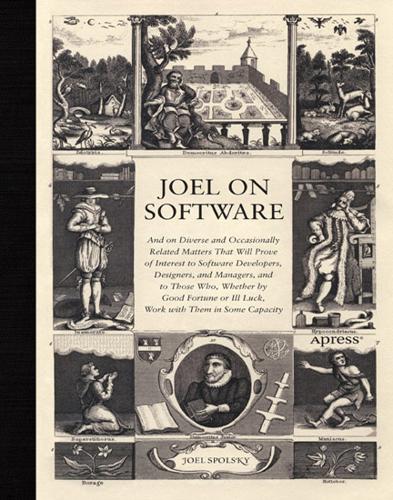
Joel on Software
by
Joel Spolsky
Published 1 Aug 2004
To summarize, I'm not very impressed by people who try to prove wild economic things about free-as-in-beer software, because they're just getting divide-by-zero errors as far as I'm concerned. Open source is not exempt from the laws of gravity or economics. We saw this with Eazel, ArsDigita, The Company Formerly Known as VA Linux, and a lot of other attempts. But something is still going on that very few people in the open source world really understand: a lot of very large public companies, with responsibilities to maximize shareholder value, are investing a lot of money in supporting open source software, usually by paying large teams of programmers to work on it.

Dreaming in Code: Two Dozen Programmers, Three Years, 4,732 Bugs, and One Quest for Transcendent Software
by
Scott Rosenberg
Published 2 Jan 2006
And Torvalds’s results-oriented case for open source appealed to his businessman’s pragmatism. The open source movement had already been through several rounds of a complicated dance with the business world. At the height of the Internet stock market craze in the spring of 2000, Linux had experienced its own mini-bubble, and a number of open source companies, including Red Hat and VA Linux, had gone public. Open source stocks fared no better than any other technology investments during the dot-com wipeout that followed. But the corporations of the world still needed to run computer systems, and in the era of belt tightening that started with the market crash of 2000 and deepened in the days after 9/11, the price tag of open source-based systems looked very attractive.

WTF?: What's the Future and Why It's Up to Us
by
Tim O'Reilly
Published 9 Oct 2017
Michael Tiemann said that Cygnus had begun using the term sourceware. But Eric Raymond argued for open source, a new term that had been coined only six weeks earlier by Christine Peterson of the Foresight Institute, a nanotechnology think tank, at a meeting convened by Larry Augustin, the CEO of a Linux company called VA Linux Systems. Eric and another software developer and free software activist, Bruce Perens, had been so excited about Christine’s new term that they had formed a nonprofit organization called the Open Source Initiative to reconcile the various free software licenses that were being used into a kind of metalicense.

The Art of Community: Building the New Age of Participation
by
Jono Bacon
Published 1 Aug 2009
The event included presentations by local user group members, with some companies sending representatives to speak. We also had an exhibit in Nortel’s cafeteria, where individuals demonstrated various open source applications and Linux distributions. A few of the early open source-focused companies such as VA Linux and LinuxCare sent representatives as well, but the focus was mostly on Linux users showing one another projects we were interested or involved in. How did the LUGFests transition into SCALE? Unfortunately, after four LUGFests, the dot-com bubble burst resulted in us losing the venue Nortel had previously been providing.